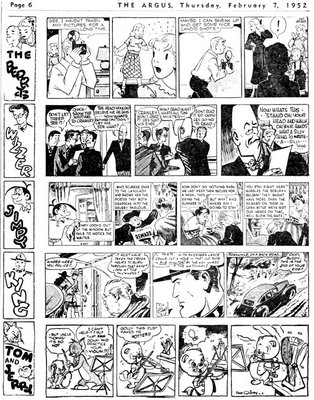 Look, some of these might not be oboes at all. I could be swooning over an oboe when I'm really hearing a clarinet or a cor anglais or... I don't know what else: a penny whistle? I believe we're at least talking woodwinds, but an electronic keyboard could be leading me astray. Maybe I should go back to The Young Person's Guide to the Orchestra.
Look, some of these might not be oboes at all. I could be swooning over an oboe when I'm really hearing a clarinet or a cor anglais or... I don't know what else: a penny whistle? I believe we're at least talking woodwinds, but an electronic keyboard could be leading me astray. Maybe I should go back to The Young Person's Guide to the Orchestra.With that caveat, these are some songs that show how an oboe (or something that sounds like an oboe), tastefully arranged and sparingly introduced, can be the making of a pop record:
The Chiffons - Sweet Talkin' Guy (1965)
This shuffling piece of girl-group pop has a joyful groove that makes you smile, but lyrics that are about heartbreak and deception, one of those contradictory songs mentioned in an earlier post. Still, the tasteful oboe line in the instrumental break does have a plaintiveness about it. (Sweet Talkin' Guy's writer credits are to Eliot Greenberg and Robert Schwartz, co-founders of Laurie Records, with Barbara Baer and Douglas Morris.)
Harpers Bizarre - Cotton Candy Sandman (1968)
Written by Kenny Rankin (mentioned earlier in connection with Nick Lampe) who had released it himself in 1967 on Mind Dusters. The lyrics are sentimental, but if that's not your bag just focus on the light, sunshiny melody, arranged in a perfect mix of orchestral instruments (strings, oboe and harp) driven along by a tight pop rhythm section.
Honeybus - I Can't Let Maggie Go (1968)
British band Honeybus gave us at least two classic songs: (Do I) Figure In Your Life (1967) - famously recorded by Joe Cocker - and I Can't Let Maggie Go, both written by Honeybus's Pete Dello (Peter Blumson). He used two oboes, a cor anglais and a bassoon in the arrangement, inspired by a work by Mozart for woodwinds (Welch & Soar, One Hit Wonders, 2003).
Rod Stewart - Handbags And Gladrags (1970)
Rod at his peak, with oboe intro, on a Mike D'Abo song that later grew legs of its own, thanks in part to its airing as the theme for The Office. See my page on its history, over at the website.
Dream Academy - Life In A Northern Town (1985)
I can't resist this: a band whose onstage line-up includes an exceedingly cool oboe player who also sings back-up vocals. The oboist is Kate St John, whose discography includes sessions with Van Morrison, Kirsty McColl and Nigel Kennedy, as well as albums in her own right. More at KateStJohn.co.uk. Meantime, press Play:
Image of oboist courtesy of the Special Collections Department, University of Iowa Libraries.





